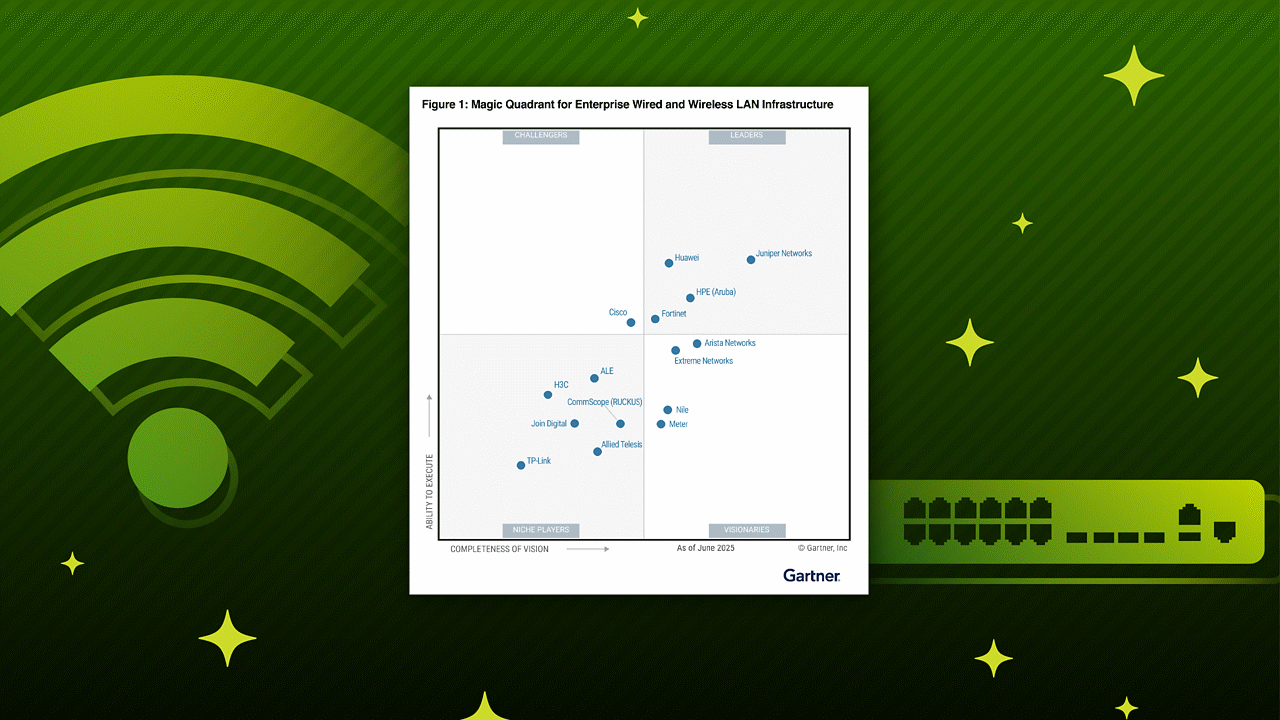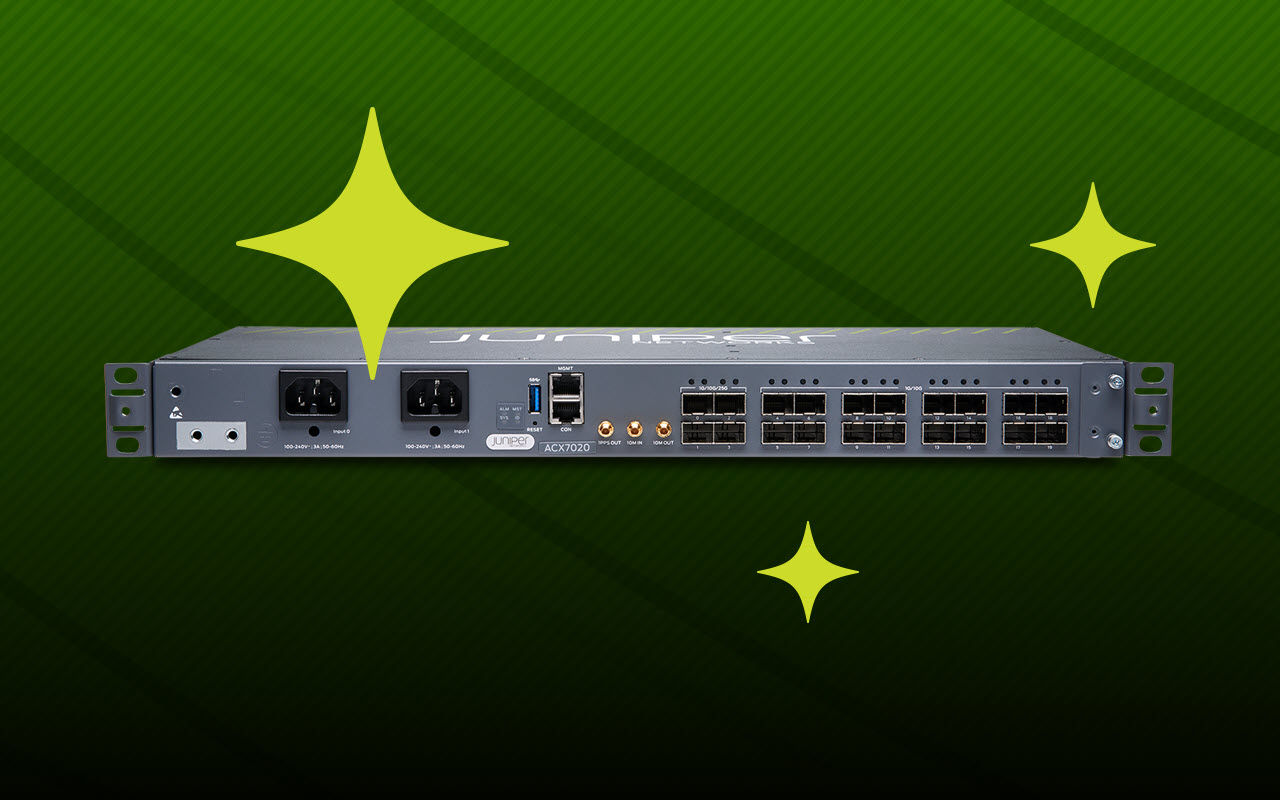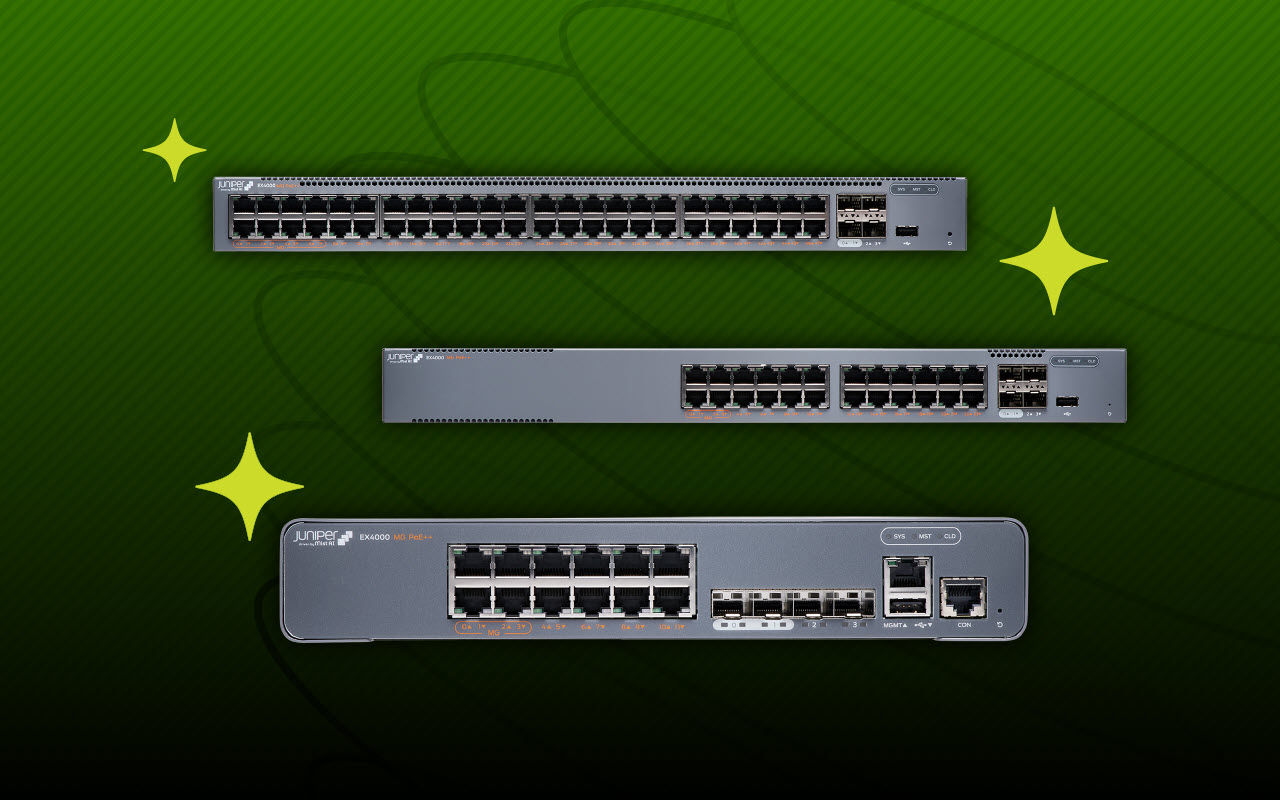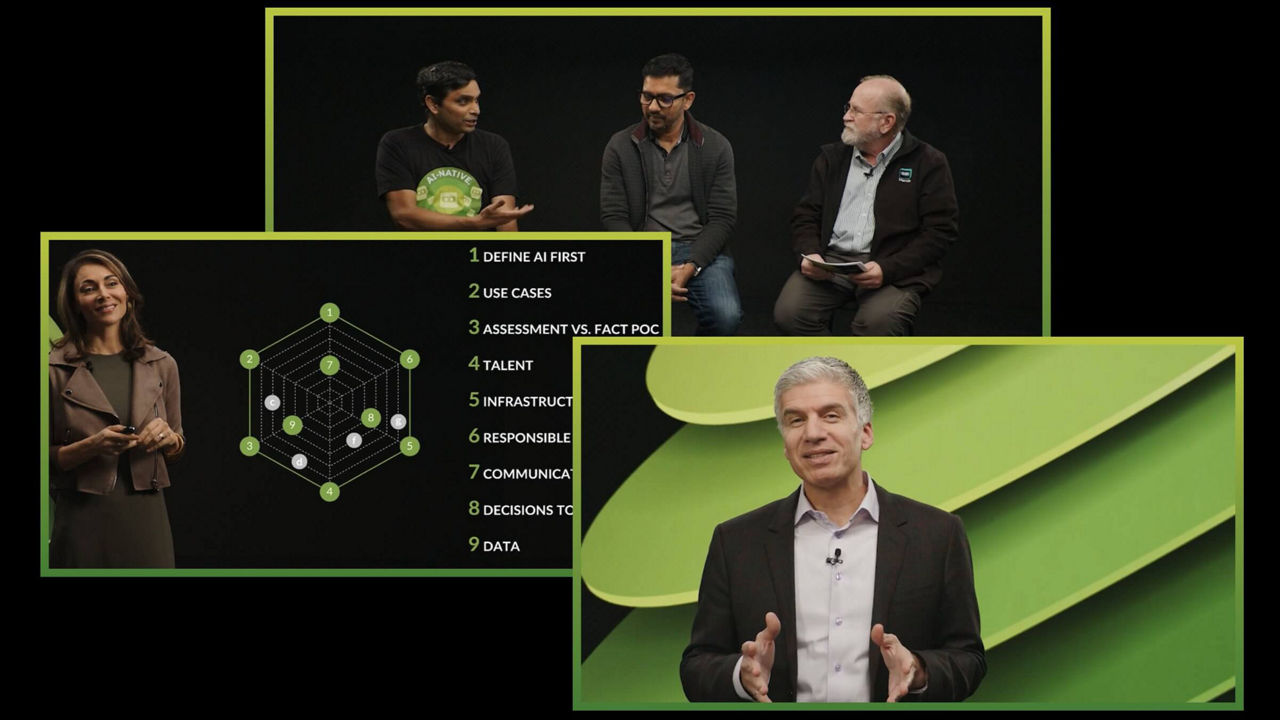QFX5230-64CD Switch Datasheet
Download DatasheetProduct overview
With the current growth in artificial intelligence (AI) and machine learning (ML) developments, networks are expected to perform at their best to support heavy workloads. Higher bandwidth requirements between the server and the top-of-rack switch result in higher 400GbE radix requirements at the spine and super-spine layer of the IP fabric multitier architecture.
Juniper Networks QFX5230-64CD switch supports:
— high-speed, high-density, spine-and-leaf IP fabrics
— 400GbE, 200GbE, 100GbE, 50GbE, 40GbE, 25GbE, and 10GbE connections
— advanced L2/L3 features and secure ZTP
— large, next-generation IP fabrics with best-in-class automation capabilities
Product description
Juniper Networks® QFX5230-64CD switch is a high-radix class switch, dedicated for high-bandwidth network switching devices supporting up to 64 × 400GbE, 128 × 200GbE, 256 × 100GbE, 64 × 40GbE, 256 × 25GbE, 256 × 10GbE ports in 2 U form factor. This makes the QFX5230-64CD optimal for AI data center deployments and spine and super-spine roles within IP and Ethernet VPN–Virtual Extensible LAN (EVPN-VXLAN) fabrics. The additional Remote Direct Memory Access over Converged Ethernet (RoCEv2) capabilities of the QFX5230-64CD support IP storage deployments where instead of relying on deep buffer switching, the QoS mechanisms such as priority-based flow control-distributed services code point (PFC-DSCP) and explicit congestion notification (ECN) deliver high performance for the storage workloads. Support for ZR/ZR-M optics makes it suitable for edge and data center interconnect (DCI) use cases.
Automation and monitoring
Apstra Data Center Director (formerly Juniper Apstra) intent-based networking delivers full Day 0 through Day 2+ capabilities for IP/EVPN fabrics with closed-loop assurance in the data center. Data Center Director is a fabric management solution that empowers organizations to automate and manage their networks across virtually any data center design, vendor, and topology, making private data center as easy as cloud. Data Center Director provides full Day 2+ operations assurance with multiple built-in intent-based analytics probes to assure your network is running as designed. In addition, Data Center Director provides a simple UI workflow to create custom intent-based analytics to capture, enrich, and visualize data from the managed devices. Data Center Director also provides the capability to capture and analyze flow data to provide complete network visibility.
For additional automation, Junos® OS Evolved supports a robust API set to support HashiCorp® Terraform®, Ansible, zero-touch provisioning (ZTP), operations and event scripts, automatic rollback, and Python scripts. The QFX5230-64CD supports Junos Telemetry Interface, a modern telemetry streaming tool that provides performance monitoring in complex, dynamic data centers.
Features and benefits
Software
- Operating System: Junos OS Evolved (recommended releases)
- Latency: 600 ns with unicast traffic in cut-through mode
- MAC addresses per system: 128,000
- VLAN IDs: 4,000
- Number of link aggregation groups (LAGs): 128
- Number of ports per LAG: 64
- Firewall filters: 9,000
- Ingress: 3,000 Routed ACL(RACL), 768 VLAN ACL(VACL) and 3,000 Port ACL (PACL) rules
- Egress: 2,000 RACL; 512 VACL;2,000 PACL rules
- IPv4 unicast FIB routes: 720,000 prefixes; 720,000 host routes (shared b/w host and LPM table)
- Ipv6 unicast FIB routes: 366,000 prefixes; 366,000 host routes (shared b/w host and LPM table)
- IPv4 RIB routes: 2 million
- IPv6 RIB routes: 2 million
- Address Resolution Protocol (ARP) entries: 32,000
- Generic routing encapsulation (GRE) tunnels: 1,000
- Jumbo frame: 9216 bytes
- Traffic mirroring
- Mirroring destination ports per switch: 4
- Maximum number of mirroring sessions: 8
- Mirroring destination VLANs per switch: 4
Layer 2 features
- STP—IEEE 802.1D (802.1D-2004)
- Rapid Spanning Tree Protocol (RSTP) (IEEE 802.1w); MSTP (IEEE 802.1s)
- Bridge protocol data unit (BPDU) protect
- Loop protect
- Root protect
- VLAN—IEEE 802.1Q VLAN trunking
- Routed VLAN interface (RVI)
- Static MAC address assignment for interface
- Global MAC learning disable
- Link Aggregation and Link Aggregation Control Protocol (LACP) (IEEE 802.3ad)
- IEEE 802.1AB Link Layer Discovery Protocol (LLDP)
Layer 3 features
- Static routing
- OSPF v2/v3
- Filter-based forwarding
- Virtual Router Redundancy Protocol (VRRP/VRRPv3)
- IPv6
- Virtual routers
- Loop-free alternate (LFA)
- BGP
- IS-IS
- Dynamic Host Configuration Protocol (DHCP) v4/v6 relay(stateless)
- VRF-aware DHCP
- IPv4 unicast routes:
- 2,000,000 routes (RIB)
- 720,000 LPM routes (FIB)
- 720,000 host routes (FIB)
- IPv6 unicast routes:
- 2,000,000 routes (RIB)
- 336,000 LPM routes (FIB)
- 336,000 host routes (FIB)
Multicast
- Internet Group Management Protocol (IGMP) v1/v2/v3
- Multicast Listener Discovery (MLD) v2
- IGMP proxy, querier
- IGMP v1/v2/v3 snooping
- Intersubnet multicast using IRB interface
- MLD snooping
- Protocol Independent Multicast PIM-SM, PIM-SSM, PIM-DM, PIM-Bidir
Quality of Service (QoS)
- L2 and L3 QoS: Classification, rewrite, queuing
- Rate limiting:
- Ingress policing: 1 rate 2 color, 2 rate 3 color
- Egress policing: Policer, policer mark down action
- Egress shaping: Per queue, per port
- 10 hardware queues per port (8 unicast and 2 multicast)
- Strict priority queuing (LLQ), shaped-deficit weighted round robin (SDWRR)
- Layer 2 classification criteria: Interface, MAC address, Ether type, 802.1p, VLAN
- Congestion avoidance capabilities: WRED, ECN
- Trust IEEE 802.1p
- Configurable shared buffer and buffer monitoring
- Congestion Notification Profile
- Priority-based flow control (PFC)—IEEE 802.1Qbb
High availability
- Bidirectional Forwarding Detection (BFD)
Visibility and analytics
- Switched Port Analyzer (SPAN)
- Remote SPAN (RSPAN)
- Encapsulated Remote SPAN (ERSPAN)
- sFlow v5
- Junos Telemetry Interface management and operations
- Role-based CLI management and access
- Junos OS Evolved configuration rescue and rollback
- Image rollback
- SNMP v1/v2/v3
- Junos OS Evolved XML management protocol
- Automation and orchestration
- Zero-touch provisioning (ZTP)
- Python
- Junos OS Evolved event, commit, and OP scripts
Junos Telemetry Interface
Streaming data to a performance management system lets network administrators measure trends in link and node utilization and troubleshoot issues such as network congestion in real time.
Junos Telemetry Interface provides:
- Application visibility and performance management by provisioning sensors to collect and stream data and analyze the application and workload flow path through the network
- Capacity planning and optimization by proactively detecting hotspots and monitoring latency and microbursts
- Troubleshooting and root cause analysis via high-frequency monitoring and correlating overlay and underlay networks

Specifications
Hardware specifications
| Parameter | Specification |
| System throughput | Up to 25.6/51.2 Tbps (uni/bidirectional) |
| Forwarding capacity | 10.53 billion packets per second |
| Port density without breakout | 64 ports of QSFP56-DD 400GbE |
| Maximum ports with breakout | 128 × 200GbE, 256 × 100GbE, 256 × 25GbE, or 256 × 10GbE |
| Dimensions (W x H x D) | 17.4 x 3.43 x 25.6 in |
| Rack units | 2 U |
| Weight | 55 lbs (25 kg) with power supplies and fans installed |
| Operating system | Junos OS Evolved |
| Switch chip | Broadcom Tomahawk4 |
| CPU | Intel Hewitt Lake (6 core) |
| Memory | 32GB (16GBx2) of DDR4 |
| Storage | 2x100GB |
| Power | Redundant (1+1) hot-pluggable 3000 W AC/2400W DC power supplies |
| Cooling | Ports-to-FRUs (AFO) and FRUs-to-ports (AFI) cooling Redundant (3x2+1) +1 hot-pluggable fan modules |
| Total packet buffer | 112 MB |
| Warranty | Juniper standard one-year warranty |
Environmental ranges
| Parameter | Specification |
| Operating temperature | 0° to 40°C @6000 ft for AFO system, 0° to 40°C @sea level for AFI systems. |
| Storage temperature | -40° to 70° C |
| Operating altitude | AFO: 6000 ft AFI: Sea level |
| Relative humidity operating | 5 to 90% non-condensing |
| Relative humidity nonoperating | 5 to 90% non-condensing |
| Seismic | Zone 4 earthquake rating |
Safety and compliance
- UL 60950-1:2007 R5.19 Information Technology Equipment–Safety
- CAN/CSA-C22.2 No. 60950-1-07+A1:2011+A2:2014 Information Technology Equipment—Safety
- IEC 62368-1:2014 Audio/Video, Information and Communication Technology Equipment—Safety (All country deviations): CB Scheme
- IEC 62368-1:2018 Audio/Video, Information and Communication Technology Equipment—Safety (All country deviations): CB Scheme
- EN 62368-1:2014+A11:2017 Audio/Video, Information and Communication Technology Equipment—Safety
- UL 62368-1:2019 R10.21 Audio/Video, Information and Communication Technology Equipment—Safety
- CSA C22.2 No. 62368-1:19, Audio/Video, Information and Communication Technology Equipment—Safety
- IEC/EN 60825-1 Safety of Laser Products—Part 1: Equipment Classification and Requirements
- IEC/EN 60825-2 Safety of Laser Products—Part 2: Safety of Optics Fibre Communication Systems
| Parameter | QFX5230-64CD |
| Maximum power draw | 220-240 V : 1396 W (AC), 1446 W (DC) |
| Typical power draw | 220-240 V : 498 W (AC), 487 W (DC) |
Electromagnetic compatibility
- FCC 47 CFR Part 15
- ICES-003 / ICES-GEN
- BS EN 55032
- BS EN 55035
- EN 300 386 V1.6.1
- EN 300 386 V2.2.1
- BS EN 300 386
- EN 55032
- CISPR 32
- EN 55035
- CISPR 35
- IEC/EN 61000 Series
- IEC/EN 61000-3-2
- IEC/EN 61000-3-3
- AS/NZS CISPR 32
- VCCI-CISPR 32
- BSMI CNS 15936
- KS C 9835 (Old KN 35)
- KS C 9832 (Old KN 32)
- KS C 9610
- BS EN 61000 Series
- NEBS GR-1089-Core Issue 8 EMC and Electrical Safety for Network Telecommunications Equipment
ETSI
- ETSI EN 300 019: Environmental Conditions & Environmental Tests for Telecommunications Equipment
- ETSI EN 300 019-2-1—Storage (ETSI EN 300 019-2-1), Class 1.2
- ETSI EN 300 019-2-2—Transportation (ETSI EN 300 019-2-2), Class2.3
- ETSI EN 300 019-2-3—Stationary Use at Weather protected Locations, non-condensing. Class 3.2
- ETSI 300753 (1997)—Acoustic noise emitted by telecommunications equipment
Environmental compliance
- Restriction of Hazardous Substances (RoHS)
- Toxic Substances Control Act (TSCA)
- Persistent Organic Pollutants (POPs)
- Recycled Material Waste Electronics and Electrical Equipment (WEEE)
- Registration, Evaluation, Authorization and Restriction of Chemicals (REACH)
- Substances of Concern in Products (SCIP)
Telco
- Common Language Equipment Identifier (CLEI) code
Ordering information
| QFX5230-64CD-AFO | QFX5230-64CD (hardware with base software), 2U, 64 QSFP56-DD ports, redundant fans, 2 AC power supplies, front-to-back airflow |
| QFX5230-64CD-AFI | QFX5230-64CD (hardware with base software), 2U, 64 QSFP56-DD ports, redundant fans, 2 AC power supplies, back-to-front airflow |
| QFX5230-64CD-D-AFO | QFX5230-64CD (hardware with base software), 2U, 64 QSFP56-DD ports, redundant fans, 2 DC power supplies, front-to-back airflow |
| QFX5230-64CD-D-AFI | QFX5230-64CD (hardware with base software), 2U, 64 QSFP56-DD ports, redundant fans, 2 DC power supplies, back-to-front airflow |
| QFX5230-64CD-CHAS | QFX5230-64CD (hardware with base software), 2U, 64 QSFP56-DD ports w/o PSU & Fans |
| JNP-3000W-AC-AFO | QFX5230-64CD-AFO 2U AC power supply unit |
| JNP-3000W-DC-AFO | QFX5230-64CD-D-AFO 2U DC power supply unit |
| JNP-2700W-AC-AFI | QFX5230-64CD-AFI 2 U AC power supply unit |
| JNP-2400W-DC-AFI | QFX5230-64CD-D-AFI 2U DC power supply unit |
| QFX5230-64CD-FANAI | Airflow in (AFI) back-to-front airflow fans for QFX5230-64CD |
| QFX5230-64CD-FANAO | Airflow out (AFO) front-to-back airflow fans for QFX5230-64CD |
| QFX5230-2RU-4PRMK | 4-Post Rack Mount Kit for QFX5230-64CD |
| Software | |
| S-QFX5K-C4-A1-X | Advanced 1 Software Subscription (X=Term Lengths (1,3,5,P): 1-year, 3-year, 5-year, Perpetual) License for QFX5230-64CD |
| S-QFX5K-C4-A2-X | Advanced 2 Software Subscription (X=Term Lengths (1,3,5,P): 1-year, 3-year, 5-year, Perpetual) License for QFX5230-64CD |
| S-QFX5K-C4-P1-X | Premium Software Subscription (X=Term Lengths (1,3,5,P): 1-year, 3-year, 5-year, Perpetual) License for QFX5230-64CD |
Optics and transceivers
QFX5230-64CD supports varying port speeds at 400G, 200G, 100G, 50G, 40G, 25G, and 10G with different transceiver options of direct attach copper cables, active optical cables, break out cables (DACBO and AOCBO). Up-to-date information on supported optics can be found on the Hardware Compatibility Tool at https://apps.juniper.net/hct/product/?prd=QFX5230-64CD.
Useful links
About Juniper Networks
Juniper Networks is leading the convergence of AI and networking. Juniper’s Mist™ AI-native networking platform is purpose-built to run AI workloads and simplify IT operations assuring exceptional secure user and application experiences—from the edge, to the data center, to the cloud. Additional information can be found at www.juniper.net, X, LinkedIn, and Facebook.
1000784 - 010 - EN SEPTEMBER 2025






















